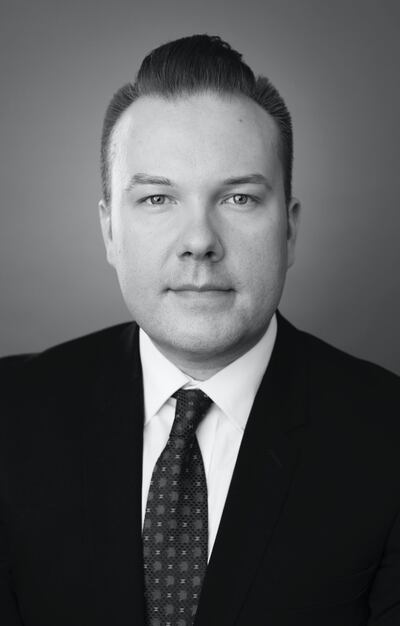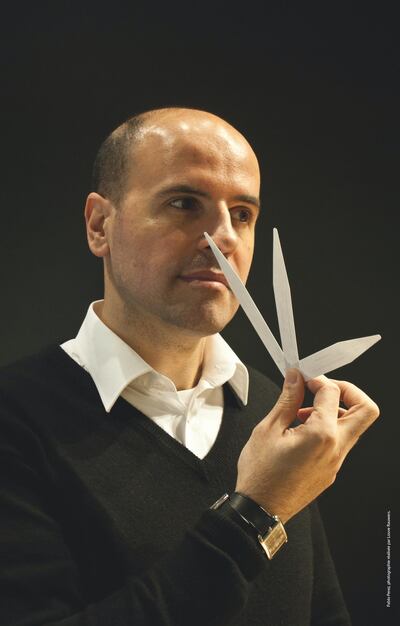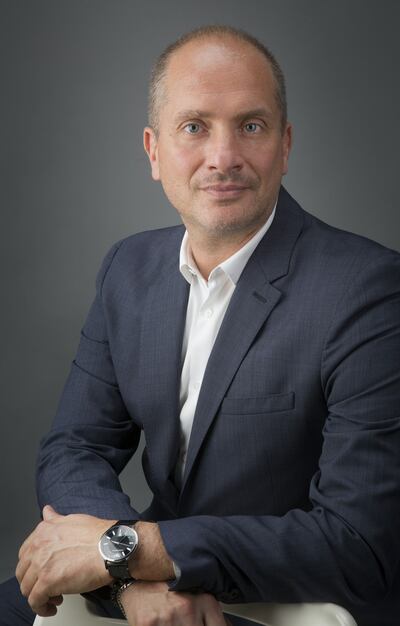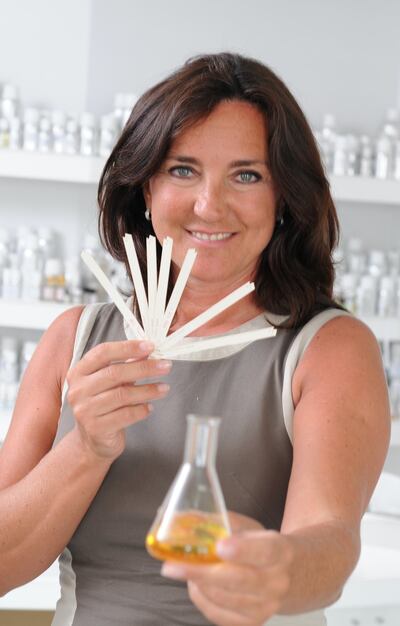
The Business of Fashion
Agenda-setting intelligence, analysis and advice for the global fashion community.

Agenda-setting intelligence, analysis and advice for the global fashion community.

FLORENCE, Italy — "In the last four years, we have seen strong growth in consumers looking for exclusivity and identity-based brands, moving away from the designer-level fragrances to more niche or artistic fragrances," says Marco Ricchetti, fashion and lifestyle economist. "As a result, the big multinationals — Puig, L'Oréal, Estée Lauder — and some fashion brands, like Hermès and Armani, have started to target the niche market," he continues.
Ricchetti also curates the market research conference Osservatorio Fragranze, which will be a headliner event at Pitti Fragranze, the 17th fragrance tradeshow organised by Pitti Immagine that runs from September 13 to 15. The previous edition, in 2018, drew over 2,100 buyers from more than 50 countries to the Stazione Leopolda venue, where 170 fragrance maisons and brands will exhibit this month.
As the global fragrance market grows — it was valued at $41 billion in 2018 and expected to reach north of $52 billion by 2025, according to statistics firm Euromonitor — niche products and lines are seeing the greatest spike in interest as consumers move away from the more pervasive perfumery lines. Last year, the Osservatorio Fragranze estimated that independent brands accounted for 47 percent of the industry in 2017. According to their market research at Pitti Fragranze in 2018, 43 percent of exhibiting independent brands were expecting revenue growth above 5 percent.
There is however a greater drive for transparency around raw materials, product sourcing and sustainable practices in the independent and niche fragrance industry, though this trend is expected to transcend into mass product lines. The BoF and McKinsey & Co. State of Fashion Report 2019 states that 52 percent of Millennials always research brands before buying products.
“Another serious issue is how to keep in touch with Millennials on the issue of the price. This is why many brands have started to sell smaller bottlers — 30ml instead of 100ml — so they can be purchased more easily by younger consumers,” says Ricchetti.
Consumers don't want to see their perfume in Duty Free — people are looking for rarity and exclusivity.
Despite the growing consumer interest in niche and independent brands, businesses face unique challenges idiosyncratic to fragrance, such as customers effectively gauging scents online.
“The form of retail has to change. Now, we have department stores for niche brands and independent multi-brand stores, and most of them are not that advanced. A few brands are experimenting with new atmospheres in the stores and creating the right noise to engage consumers, but we don’t yet have an evolutionary format, which is a big challenge.”
“The model of the market behaviour has changed,” Ricchetti adds, citing Jo Malone, owned by Estée Lauder since 1999, as a leader in adopting a "fashion-like" strategy. “Today, companies acquired by big multinationals issue a huge number of scents — maybe 7 or 8 new fragrances every year, compared to just 1 or 2 in the past.” Indeed, large conglomerates still dominate the market, with Coty Inc. reporting annual revenue of $8.6 billion for the year ended June 2019, while Puig published 2018 net revenue as in excess of $2.1 billion.
To learn more about the changes in the market, BoF curated a group of Pitti Fragranze attendees, including globally renowned department store buyers, respected independent retailers and the accomplished founder of an emerging brand. Here, we share their insights on the independent fragrance market.

Vesa Kalho, Beauty & Cosmetics Buyer at Harrods | Source: Courtesy
Vesa Kalho, Perfumery and Cosmetics Buyer at Harrods
Chairman of the Cosmetics & Perfumery Retailers Association since 2016, Kalho joined Harrods in 2001, which is home to Salon de Parfums within its world-renowned Beauty Hall.
How has selling fragrance changed with digital disruption?
At Harrods, we see online and offline experiences as the same, so our customer should have the same experience, be it on their laptop, their mobile or in-store. Social media is a key part of selling fragrance and it will be even bigger in the future. But, obviously, you can’t smell the fragrance online. If you were to put a makeup tutorial on Instagram, you can see the result immediately, so the challenge for fragrance is, how do you overcome that?
I think it is education, and it starts with the ingredients so that the customer understands what the different ingredients are. Hopefully that will bring consumers in store to try them on, so that they’re more au fait with the ingredients.
How are retailers and brands responding to demand for niche products?
Niche brands like Le Labo, for example, are doing really well for us, but at the same time, the luxury brands are introducing niche selections within their brands with limited distribution collections, like Chanel Exclusive, Christian Dior with their Maison Christian Dior, and Givenchy with their L'Atelier collection.
For us, luxury is the key market for us, and in our Beauty Hall, we have dedicated quite big spaces to fragrance brands like Acqua di Parma, Jo Malone and Diptyque. But then, we’ve also created space for lesser known brands like Atelier Cologne, who have created a worldwide exclusive for Harrods, and we’ve launched a new brand called Fueguia from Argentina, for which we’re the first retail partner with an exclusive drop in the UK.
How do you combine experiential retail with selling fragrances?
Recently, we hosted a ‘Notes on Notes’ sensory exploration event in our Salon de Parfums, which we created with the London Philharmonic Orchestra. They created a playlist that played throughout the Salon, linking different parts of the world together. We also had the Ex Nihilo brand founders do a masterclass on fragrance — it’s one of those experiences you wouldn’t necessarily get anywhere except at Harrods.
In the Beauty Hall, we’ve also created specific brand spaces so that the customer knows they’re in Harrods, but once they are in a brand boutique, they know that they’re entering a brand universe and can truly immerse themselves. Like with Acqua di Parma, it’s not necessarily just a fragrance, but it’s leather accessories, shaving accessories – it becomes a world.

Pablo Perez, Store Manager of Senteurs D'Ailleurs | Source: Courtesy
Pablo Perez, Store Manager at Senteurs d'Ailleurs
The Belgian boutique specialises in niche perfumery, home fragrances and cosmetic products, opening in 1997 and stocking brands including Creed, Lebon, Etro and Acqua di Parma.
How are you adapting to changing consumer preferences?
At Senteurs d’Ailleurs, we try to work with more exclusive brands because people want something that is not available in the mainstream — consumers don’t want to see their perfume in Duty Free at the airport. In high-end fragrance and premium products, people are looking for rarity and exclusivity, so when they come to the store, they want to know what is exclusive.
In what ways do you leverage a brand’s exclusivity?
Exclusive perfumers or houses often don’t do advertising — and we don’t either. As a result, consumers know when they come to Senteurs d’Ailleurs, they can find something different from brands marketed on Instagram or Facebook.
With brands that don’t do advertising, it’s really based on word of mouth. It is not always that easy, but it works for us and it’s interesting because it also gives exclusivity to journalists that we work with. We work with press agencies and organise exclusive interviews with exclusive perfume creators, so brands want to work with us because they know that they can share real information.
What is your opinion on the use of digital platforms within the fragrance market?
When you smell something, it’s more a sensation or a feeling. I don’t think you will ever be able to replace a boutique or a shop where you have advisors who listen to your needs and understand what you could like and what you are looking for. Unlike with clothing brands, when you know your size and you can see what it looks like on another person, a perfume will smell different on me than on another person. Digital will never really replace an in-store experience.
How significant is the demand for sustainable products?
Like for any other market or product today, sustainability can’t be avoided and remains a concern for the fragrance industry. There are more efforts on packaging, which seems to be the biggest concern from consumers. Some brands are working on not using too much plastic or creating recyclable packaging, while others are creating refillable bottle designs so you don’t have to throw away your empty bottle.
I also think when you create a niche product, you want quality over quantity. When you buy luxury products, perfumes and fragrances, you buy them knowing that they have been developed in the right way. You want to pay the price because it’s better and more considered than the mainstream market.

Alessandro Moretti, Sales Manager at Olfattorio | Source: Courtesy
Alessandro Moretti, Sales Manager at Olfattorio
An Italian distributor of luxury fragrances with 12 stores across Italy, Olfattorio's Bar à Parfums stocks scents from the likes of Aesop, Byredo, Diptyque and L'Artisan Parfumeur.
Which markets and segments are driving the most growth?
I believe that niche perfume market is growing, not perfumery in general. Consumers are looking for recognition, status and emotional experiences in perfumes in order to distinguish themselves from others. This happens in the niche perfumery sector while in traditional perfumery, their biggest sales come from their brand strategy.
Olfattorio operates in the Italian market, which we believe remains a key reference for luxury. However, other markets that are influencing growth in the fragrance market are the Middle East and Asia. We are also noticing an increase in the consumption of gender-free fragrances and perfumes created specifically for hair. Then, as far as specific segments are concerned, first are the alcoholic perfumes for people, followed by home fragrances and body range of the bestseller products.
How has selling fragrances changed in recent years?
Digital experiences and e-commerce created a disarray in the world of niche perfumery. Many players entered the market in a thunderous way, focusing only on price, disregarding customer service and online experience. We believe that the digital market is not yet mature and that it will never replace the sensory experience offered in stores.
The customer is also now more experienced and consumers who choose the niche market are looking for a unique experience. This is why we offer new incentives, cultural interaction, point-of-sale animations and cross-sector collaborations like including elements of cooking, painting, literature, photography, embroidery and mixology within our customer engagement strategies.

Laura Tonatto, Founder of Essenzialmente Laura | Source: Courtesy
Laura Bosetti Tonatto, Founder of Essenzialmente Laura
Established in 2017, Essenzialmente Laura stocks 55 scents in her collection and has created collections for Queen Elizabeth II and the State Hermitage Museum in St. Petersburg. She is also a Professor of Cosmetic Science at the University of Ferrara.
How are consumer preferences changing in the market?
Today, I think the fragrance market is made for the consumer. It is not the perfumer who says, “now you should like jasmine.” It is the consumer that says, “I like jasmine and I want the best one.” Nobody can say to me, you have to wear this. You choose your fragrance by instinct.
Now, the most important thing is raw materials — people want to know what they are wearing, what is inside the raw materials, where the plant grows, how the extraction works. All my raw materials are certified IFRA, which is a certification for raw materials in perfumery. Otherwise, uncertified raw materials can be dangerous. Consumers want to wear something that is safe as well as perfect for their personality.
How important is experiential tools with marketing your fragrances?
When consumers come to my boutiques in Rome or St Petersburg, they want to know what is going on inside the bottle. So, I show them the orange blossom from Sicily, for example, or tell them about the Taif oud I use, which is from a small town in Saudi Arabia. This helps them understand the raw materials and their quality.
I have also worked with institutions like the Hermitage Museum in St Petersburg, for which I made a perfume for the Caravaggio painting, The Lute Player. The director Mikhail Piotrovsky wanted visitors to smell as well as see the painting, because you can see with your nose as well as your eyes.
What advice do you have for individuals seeking to enter the market?
Now, noses are like chefs — they are ubiquitous. But when you finish your studies, you have to work in the lab for years to understand the process and you have to move a lot of kilograms before you begin to understand balance. Then, after maybe 2 or 3 years, you can start to work on your own collection or on some collections for a client. But this work is serious, it is not like making a cake.
Every single fragrance has a code. If you don’t respect the code of a fragrance, you will make a bad fragrance that is ill-suited for a project. For example, if you make a blend for a contemporary collection, you should not use something romantic like flowers. If you don’t respect the code, the fragrance will be revolting.
How do you approach building your online presence?
Online, you cannot smell the fragrance, but you can share a description of the fragrance and the ingredients within it. I think my online business is very important as we have direct contact with our consumers. We can explain our history and anything they might want to know about our brand online. Instagram and Facebook are also important for business so that people can discover you, which is a wonderful tool for brands today.
This is a sponsored feature paid for by Pitti Fragranze as part of a BoF Careers partnership.
From analysis of the global fashion and beauty industries to career and personal advice, BoF’s founder and CEO, Imran Amed, will be answering your questions on Sunday, February 18, 2024 during London Fashion Week.
The State of Fashion 2024 breaks down the 10 themes that will define the industry in the year ahead.
Imran Amed reviews the most important fashion stories of the year and shares his predictions on what this means for the industry in 2024.
After three days of inspiring talks, guests closed out BoF’s gathering for big thinkers with a black tie gala followed by an intimate performance from Rita Ora — guest starring Billy Porter.